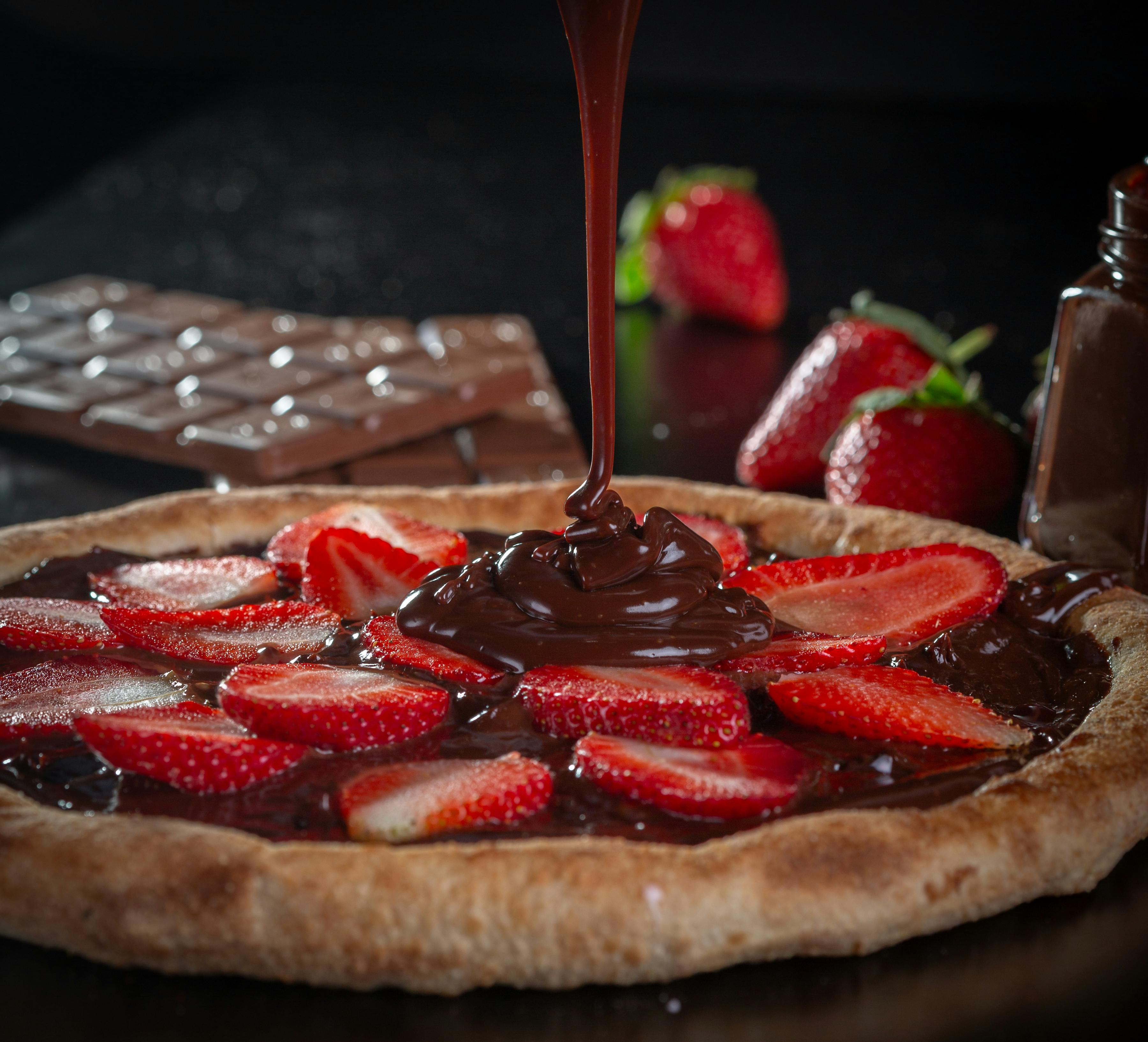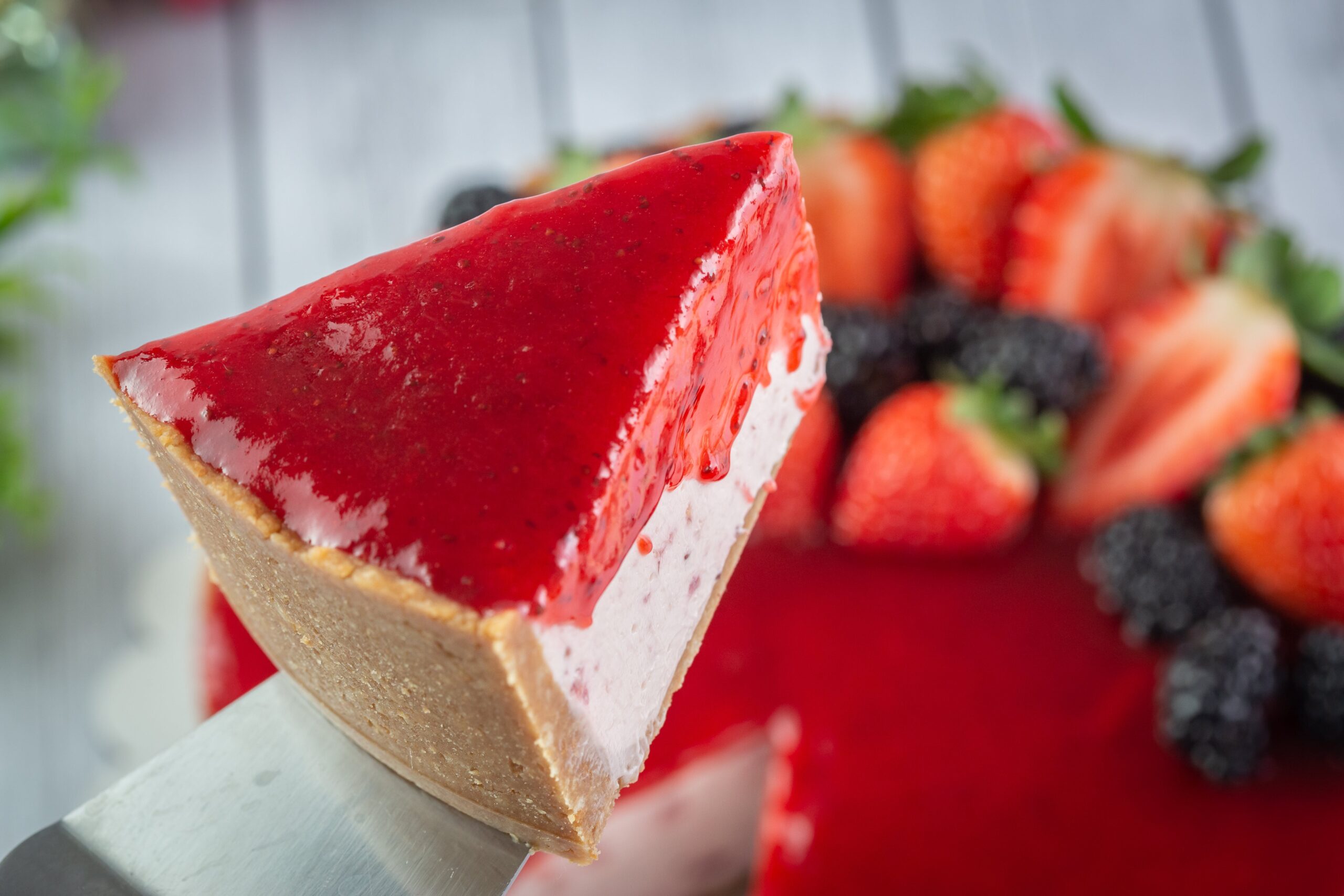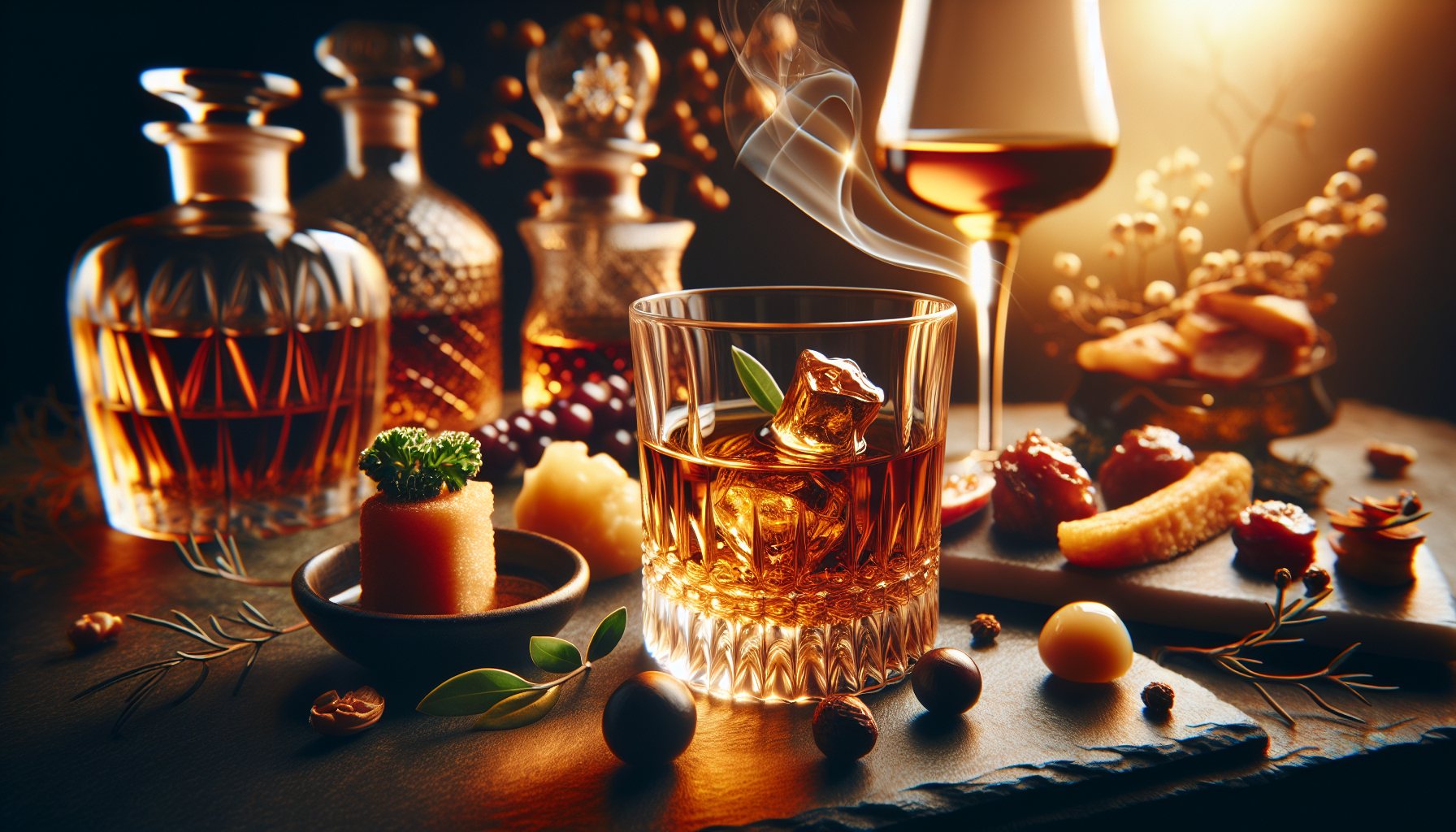Indulge in a delightful exploration of flavors with the captivating experience of whiskey and food pairing. At Tastepan.com, you’ll find an abundance of mouthwatering recipes, carefully curated to take your culinary adventures to new heights. Whether you’re craving classic comfort food or daring to try exotic international dishes, our step-by-step instructions, ingredient lists, and expert tips will ensure that each meal is a delectable masterpiece. Discover the perfect harmony between the complex notes of whiskey and the delectable flavors of our recipes, and elevate your dining experience to a whole new level of deliciousness.

The Basics of Whiskey
Whiskey is a beloved and timeless spirit that has been enjoyed by countless individuals over the years. Understanding the basics of whiskey will not only enhance your appreciation for this fine beverage but also enable you to make informed decisions when it comes to pairing it with food. Let’s start by exploring the different types of whiskey.
Types of whiskey
There are various types of whiskey, each with its distinct flavors and characteristics. The most common types include Scotch whisky, Irish whiskey, bourbon, and rye whiskey.
Scotch whisky is typically known for its smoky and peaty flavors, resulting from the malted barley being dried over a peat fire during the production process.
Irish whiskey, on the other hand, is known for its smooth and light character. It is usually triple-distilled and often exhibits fruity and floral notes.
Bourbon, a type of American whiskey, must be made from a grain mixture that is at least 51% corn. It is often aged in charred oak barrels, giving it a rich and sweet flavor profile.
Rye whiskey, also an American whiskey, is made primarily from rye grain and tends to have a spicier and drier taste compared to bourbon.
Understanding the different types of whiskey will help you in choosing the perfect bottle to complement your food.
Whiskey production process
To truly appreciate whiskey, it’s essential to understand the production process behind this exquisite spirit. While the specific details may vary slightly between whiskey types, the basic steps in whiskey production remain the same.
Firstly, grains such as barley, corn, rye, or wheat are milled and then combined with water to create a mash. The starches in the grains are then converted into sugars through the process of malting and mashing.
Once the sugars are extracted, yeast is added to ferment the mash, converting those sugars into alcohol. This fermentation process can take several days to complete.
After fermentation, the liquid, now known as the “wash,” undergoes distillation. This involves heating the liquid to separate the alcohol from impurities and other undesirable components.
The resulting distillate, known as new make spirit, is then aged in wooden barrels. The aging process is crucial, as it allows the whiskey to develop its unique flavors and characteristics over time.
Whiskey flavors and characteristics
Whiskey offers an incredible range of flavors and characteristics, making it a versatile choice for pairing with food. The taste profile of whiskey can be influenced by factors such as the type of grain, the production process, and the aging period.
Common flavor notes found in whiskey include caramel, vanilla, honey, fruitiness, spices, and hints of smoke or peat. The intensity of these flavors can vary based on the type of whiskey and its age.
Age plays a significant role in the development of flavors in whiskey. As whiskey ages in barrels, it not only takes on the nuances of the wood but also undergoes chemical reactions that result in the formation of new flavors.
As you explore different types of whiskey, you’ll discover your own preferences and appreciate the diverse range of flavors that this spirit has to offer.
Understanding Food Pairing
Pairing whiskey with food can be a delightful and rewarding experience. By understanding the factors to consider in food pairing and the concept of complementing and contrasting flavors, you can create a harmonious pairing that enhances both the whiskey and the food.
Factors to consider in food pairing
When it comes to pairing whiskey with food, there are several factors to consider. The primary goal is to create a balance between the flavors of the whiskey and the dish, allowing each component to complement and enhance the other.
One essential factor to consider is the intensity of flavors. Lighter and more delicate whiskeys are generally paired with dishes that have subtle flavors, while bolder and more robust whiskeys can stand up to dishes with stronger flavors.
Another consideration is the texture of both the whiskey and the food. A velvety smooth whiskey may pair well with a creamy and rich dish, whereas a peaty and smoky whiskey could be a great match for a grilled or roasted dish with bold flavors.
Furthermore, the regional influences of the whiskey and the origin of the dish can also play a role in the pairing. Whiskeys from specific regions often exhibit unique flavor profiles that can be complemented by dishes from the same region.
By taking these factors into account, you can create a well-balanced and enjoyable pairing experience.
Complementing flavors
Pairing whiskey with food involves finding flavors that complement and enhance each other. Complementing flavors are those that share similar characteristics or flavor profiles, creating a harmonious balance.
For example, you might pair a fruity and light whiskey, such as an Irish whiskey, with a citrus-infused dessert to enhance the fruity notes in both the whiskey and the dish.
Similarly, a bourbon with flavors of caramel and vanilla could be paired with a dessert featuring rich and creamy flavors like butterscotch or caramel to create a complementary combination.
By matching flavors that share similar characteristics, you create a cohesive and enjoyable pairing experience.
Contrasting flavors
On the flip side, contrasting flavors can also create an exciting and unique pairing experience. Contrasting flavors are those that provide a stark contrast, highlighting the differences between the whiskey and the dish.
For example, a peaty and smoky Scotch whisky could be paired with a dish that has a tangy or spicy kick to create a contrasting balance. The smoky flavors of the whiskey would contrast with the tanginess or spiciness of the dish, creating a dynamic and memorable pairing.
Similarly, pairing a delicate and floral Irish whiskey with a rich and savory dish can provide an intriguing contrast of flavors, allowing each component to shine in its own right.
Exploring contrasting flavors in whiskey and food pairings can be a fun and adventurous way to expand your culinary horizons.

Pairing Whiskey with Cheese
Cheese and whiskey make for a classic and indulgent pairing. The complex flavors of whiskey can beautifully complement the rich and varied flavors of cheese. Let’s dive into some recommended pairings for different types of cheese.
Soft and creamy cheeses
Soft and creamy cheeses, such as Brie or Camembert, have a delicate and buttery texture. Pairing them with a whiskey that has fruity and floral notes, such as an Irish whiskey, creates a perfect balance of flavors. The smoothness of the cheese is beautifully enhanced by the light and refreshing character of the whiskey.
Aged and hard cheeses
Aged and hard cheeses, such as Cheddar or Parmesan, have a bold and robust flavor profile. Pairing them with a whiskey that has a more pronounced and complex flavor, such as a bourbon or a peaty Scotch whisky, allows the whiskey to stand up to the intensity of the cheese. The rich and nutty flavors of the cheese complement the depth and richness of the whiskey.
Blue cheeses
Blue cheeses, with their pungent and tangy flavors, require a whiskey that can hold its ground. A peaty and smoky Scotch whisky provides the perfect contrast to the strong and distinct flavors of blue cheese. The earthy and smoky notes in the whiskey complement the boldness of the cheese, creating an unforgettable pairing.
When it comes to pairing whiskey with cheese, don’t be afraid to experiment and find combinations that suit your taste preferences. The possibilities are endless, and each pairing presents a new and exciting flavor experience.
Pairing Whiskey with Chocolate
Chocolate and whiskey are a match made in heaven. The sweetness and richness of chocolate beautifully complement the complex flavors of whiskey. Let’s explore some recommended pairings for different types of chocolate.
Dark chocolate
Dark chocolate, with its intense and slightly bitter flavors, pairs exceptionally well with whiskey. The deep cocoa notes in the chocolate harmonize with the robust flavors found in certain whiskeys, such as bourbons or rye whiskeys. The combination creates a delightful balance of bittersweet flavors that will tantalize your taste buds.
Milk chocolate
Milk chocolate, with its creamy and smooth texture, pairs wonderfully with a whiskey that has mellow and sweet notes. Irish whiskey, with its light and honeyed character, is an excellent choice for pairing with milk chocolate. The sweetness of the whiskey enhances the creamy sweetness of the chocolate, creating a velvety and indulgent pairing.
White chocolate
White chocolate, known for its buttery and vanilla flavors, can be paired with a variety of whiskeys. A whiskey with hints of caramel or toffee, such as a bourbon, complements the sweetness and creaminess of white chocolate. The combination results in a luxurious and decadent pairing experience.
When pairing whiskey with chocolate, consider the intensity of the flavors in both the chocolate and the whiskey. Experiment with different combinations to find the perfect balance that satisfies your sweet tooth.

Pairing Whiskey with Meat
Whiskey and meat are a timeless pairing combination. The depth and complexity of whiskey beautifully complement the rich flavors of various meats. Let’s explore some recommended pairings for different types of meat.
Beef and steak
Beef and steak are often associated with bold and robust flavors. When pairing them with whiskey, consider opting for a bourbon or a peaty Scotch whisky. These whiskeys can hold their ground against the intensity of the beef, enhancing the meaty flavors and creating a harmonious balance. The smoky and charred notes in the whiskey also complement the grilled or seared qualities of the steak.
Pork
Pork, with its versatility and range of flavors, can be paired with a wide variety of whiskeys. For a lighter and more delicate cut of pork, such as pork tenderloin, consider a floral and fruity Irish whiskey. The sweetness of the whiskey enhances the natural sweetness of the pork, creating a delightful combination. For richer and fattier cuts of pork, such as pork belly or ribs, a bourbon with notes of caramel and vanilla can provide a lovely contrast to the savory flavors.
Poultry
Poultry, such as chicken or turkey, pairs well with whiskeys that have a lighter and more subtle character. A bourbon with hints of spice or a mellow rye whiskey can complement the delicate flavors of poultry. The spices in the whiskey add depth and complexity to the dish, elevating the overall dining experience.
When pairing whiskey with meat, consider the flavors and intensity of the meat itself. Experiment with different whiskeys to find the perfect pairing that enhances the flavors of the meat.
Pairing Whiskey with Seafood
Seafood, with its delicate and nuanced flavors, can be beautifully complemented by the right whiskey. By considering the characteristics of both the seafood and the whiskey, you can create pairings that bring out the best in both components. Let’s explore some recommended pairings for different types of seafood.
Salmon
Salmon, with its rich and buttery flavor, pairs wonderfully with a smoky and peaty Scotch whisky. The bold flavors of the whiskey complement the oiliness of the salmon, creating a harmonious combination of flavors. The smokiness of the whiskey echoes the natural richness of the fish, resulting in an exquisite pairing.
Scallops
Scallops, known for their delicate and sweet flavor, require a whiskey that won’t overpower their subtlety. A lighter and fruitier whiskey, such as an Irish whiskey, can beautifully enhance the sweetness of scallops. The light and refreshing character of the whiskey provides a delightful balance, allowing the flavors of the seafood to shine through.
Lobster
Lobster, with its sweet and succulent meat, pairs well with a smooth and mellow whiskey. A bourbon or a light rye whiskey can complement the richness of the lobster without overpowering it. The caramel and vanilla notes in the whiskey add depth to the flavors of the seafood, creating a luxurious and indulgent pairing experience.
When pairing whiskey with seafood, consider the delicate flavors of the seafood and choose a whiskey that won’t overshadow them. Opt for whiskeys with lighter, fruitier, or smoky profiles, depending on the seafood being served.
Pairing Whiskey with Vegetables
While whiskey and meat pairings often steal the spotlight, pairing whiskey with vegetables can provide a delightful and unexpected dining experience. The earthy and complex flavors of certain whiskeys can complement the natural sweetness and textures of various vegetables. Let’s explore some recommended pairings for different types of vegetables.
Roasted vegetables
Roasted vegetables, with their intensified flavors, pair beautifully with a whiskey that has smoky or caramel notes. A peaty Scotch whisky or a bourbon can enhance the earthiness of roasted vegetables and add depth to their flavors. The smokiness or caramel flavors in the whiskey create a pleasant contrast to the sweetness of caramelized or charred vegetables.
Grilled vegetables
Grilled vegetables, with their smoky and charred qualities, can be paired with a whiskey that has similar characteristics. A whiskey with smoky or peaty notes can elevate the flavors of grilled vegetables, creating a dynamic and delicious pairing. The smokiness in both the whiskey and the vegetables enhances each component, resulting in a memorable combination.
Root vegetables
Root vegetables, such as carrots or parsnips, have a natural sweetness that can be enhanced by a whiskey with fruity or caramel flavors. An Irish whiskey or a bourbon can beautifully complement the sweetness of root vegetables, bringing out their best qualities. The fruity or caramel notes in the whiskey add depth and complexity to the flavors of the vegetables, creating a well-rounded pairing.
When pairing whiskey with vegetables, consider the flavors and textures of the vegetables. Seek out whiskeys that can enhance and complement the natural qualities of the vegetables, creating a delightful and surprising pairing experience.
Whiskey Cocktails to Pair with Food
While whiskey is often enjoyed neat or on the rocks, exploring whiskey cocktails can add an extra dimension to your food pairing experience. Here are three classic whiskey cocktails that pair well with a variety of dishes.
Whiskey sour
The Whiskey Sour is a classic cocktail that combines whiskey, lemon juice, and simple syrup. Its refreshing and tangy flavors make it an excellent companion for a wide range of dishes. The bright acidity of the cocktail can cut through fatty or rich foods, refreshing the palate between bites.
Pair a Whiskey Sour with grilled or roasted meats, such as steak or pork, to cleanse the palate and enhance the flavors of the meat. The citrusy and slightly sweet characteristics of the cocktail provide a delightful contrast to the savory qualities of the meat.
Old Fashioned
The Old Fashioned is a timeless cocktail that highlights the flavors of whiskey. Made with sugar, bitters, and whiskey, this cocktail is simple yet full of complexity. The rich and smooth character of the Old Fashioned pairs well with dishes that have bold and robust flavors.
Pair an Old Fashioned with dishes like hearty stews or braised meats. The deep and layered flavors in the cocktail complement the richness of the dish, creating a luxurious and indulgent pairing experience.
Manhattan
The Manhattan is a classic cocktail that showcases the flavors of whiskey, sweet vermouth, and bitters. This sophisticated and elegant cocktail pairs wonderfully with dishes that have complex flavors and depth.
Pair a Manhattan with dishes like roasted duck or game meats. The complexity and balance of flavors in the cocktail elevate the richness and gaminess of the meat, creating a memorable pairing experience.
When pairing whiskey cocktails with food, consider the flavors and intensity of both the cocktail and the dish. Experiment with different combinations to find the perfect balance that enhances the dining experience.
Hosting a Whiskey and Food Pairing Event
Hosting a whiskey and food pairing event can be a fantastic way to share your love for this delightful combination with friends and family. Here are some tips on how to create a memorable and enjoyable event.
Choosing the right whiskies
When selecting whiskies for your event, consider offering a diverse range of flavors and styles. Include a variety of whiskies from different regions, such as Scotch, Irish, and American whiskeys, to provide a well-rounded tasting experience.
You can also focus on a specific theme, such as peaty Scotch whiskies or bourbons, to showcase the unique characteristics of certain types of whiskey.
Ensure that you have enough whiskies to pair with each course of the meal, allowing guests to experience the different flavor combinations. Provide a variety of tasting glasses to allow for multiple pours and comparisons.
Creating a tasting menu
Crafting a well-thought-out tasting menu is crucial to a successful whiskey and food pairing event. Start with lighter and more delicate pairings, gradually increasing the intensity of flavors throughout the meal.
Consider the flavors, textures, and intensities of both the whiskey and the food when designing the menu. Aim for complementary or contrasting combinations that enhance the overall dining experience.
Offer a variety of dishes that showcase different ingredients, cooking techniques, and flavor profiles. This diversity will allow guests to explore the versatility of whiskey when paired with food.
Setting the ambience
Creating the right ambience is essential for a whiskey and food pairing event. Choose a cozy and inviting setting that encourages guests to relax and savor the flavors.
Consider setting up a whiskey tasting station with different types of glasses, water pitchers, and tasting notes for each whiskey. This allows guests to explore the whiskies at their own pace and learn about the unique characteristics of each.
Create a warm and welcoming atmosphere with soft lighting, comfortable seating, and background music that complements the evening. Encourage conversation and discussion about the pairings, allowing guests to share their experiences and insights.
Conclusion
Pairing whiskey with food is a delightful and flavorful experience that can elevate your culinary adventures. By understanding the basics of whiskey, the factors to consider in food pairing, and the different pairing possibilities, you can create harmonious combinations that enhance both the whiskey and the food.
Whether you’re pairing whiskey with cheese, chocolate, meat, seafood, or vegetables, the key is to experiment, explore, and trust your taste buds. Each combination offers a unique and memorable flavor experience, allowing you to truly savor the complexities of whiskey and unlock new dimensions of flavor.
So gather your friends, pour a glass of your favorite whiskey, and embark on a culinary journey filled with delectable flavors and indulgent pairings. Cheers to the wonderful world of whiskey and food pairing!

